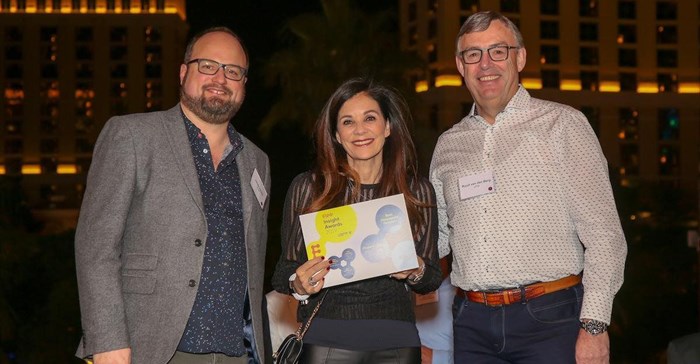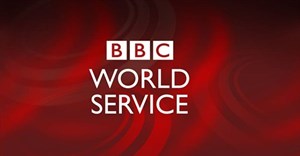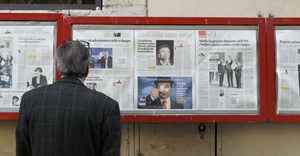
Subscribe & Follow
Jobs
- Junior/Mid-Level Video Editor Johannesburg
- Personal Assistant and Project Coordinator to CEO Cape Town
- SEO and Content Creator Intern Cape Town
- Media - Sales Manager - Digital or Broadcasting Exp Essential or Both Johannesburg
- Head of Performance Marketing South Africa
- Journalist Intern Johannesburg
2019 FIPP World Media Congress: Highlights and key insights

FIPP, the network for connecting global media, is an incredibly important platform for content publishing, and the objective of the annual FIPP Congress conference is to leverage ideas and business for its members. I have chosen a small selection of the presentations that made a deep impact on my thinking.
Click here for a more or less complete speaker lineup of presentations, should you want to have a look.
- Tyler Brûlé presented on being fiercely independent and building Monocle, always purist in its approach but remaining ahead of the pack in terms of owning its route to market with a recently launched store in the airport in Hong Kong (not just selling its own title but also those of competitors) and in partnership with Lagadère. This family-owned business is now 11 years old and consists of a 50-person team with a global footprint. They have successfully rolled out their print brand into merchandise, audio, print and digital while at the same time creating a more fully owned and controlled route to market.
- Stephan Hamberger from Red Bull Media House in the US spoke about engaging their audience through emerging technology and innovation. Totally streamlined in their approach, the presentation focused on explaining a value chain of their owned and managed channels. Owned channels have a highly engaged audience, yet lower reach, while managed channels have a lower engagement, but higher reach. Owned channels have a direct relationship with the consumer, while managed channels have an indirect relationship with the consumer. It’s this combination of offering that magazine media can really promote as one of our unique selling propositions. Red Bull has also really invested in superior content, which has not only enabled them to pull ahead of their competitors but also driven the transition of the organisation from an energy-drink business to a fully fledged media business.
- Time Magazine’s creative director D.W. Pine spoke about the Time cover and designing inside the signature red border. What I loved about this presentation was that it resonated with our recent rebranding of House and Leisure, which employed strict design guidelines to achieve a completely new brand identity. It was also fascinating to hear that Pine is a firm believer in picking the right design philosophy and then limiting the creative team to those guidelines. This approach creates the best creative work, in his opinion, and has resulted in an iconic reputation for a simple set of design rules, which he described to the audience against a backdrop of history played out over the years. The Time creative team also displays highly conceptual cover strategies which play out consistently on the front of their brand – it made for an extremely visual and enjoyable presentation. We all know how much rides on a cover… especially in a newsstand-driven market like South Africa. We also know that cover design is one of the hardest parts of publishing any brand. The Time cover design is in a league of its own.
- Angela Henshall from the BBC spoke about the recently launched 50:50 project, which aims to encourage broadcasters globally to approach more diversity in content. Their end goal is increasing the number of women in journalism, and the collection and sharing of data is the engine they are using to achieve that. They have a proven methodology which is simple, cheap and effective, and they are willing to share with potential partners. What I love about this initiative is that no-one has all the answers, but the 50:50 project is a chance for the BBC and many other media organisations to work collaboratively towards a shared goal. Speak to Angela Henshall at moc.cbb@llahsneh.alegna if you are interested in hearing more!
Lastly, I decided not to share online my own presentation, ‘Jockeying for Position: Keeping Magazine Media in the Spotlight’ (it was every speaker’s prerogative not to do so), for three reasons. The first is that it is a very personal story, one that I feel needs to be told by the person living that story.
Secondly, it’s not a set of case studies and huge numbers/scale, as experienced by our colleagues in large countries such as the UK and the US. It’s a story of turnaround and reinvention carried out over the last few years, of fighting for a piece of the spotlight as an independent, second-generation family business in one of the toughest of times. Being one of the last speakers to close the conference, I believed this would be a more authentic approach to take.
And finally, the reason I am not sharing it online is that you need to come to FIPP Congress 2020 – to be in the room and engage in discussions about how to keep growing our business, not just in SA but also in a global market. It’s being there in the audience that has the real value.

















